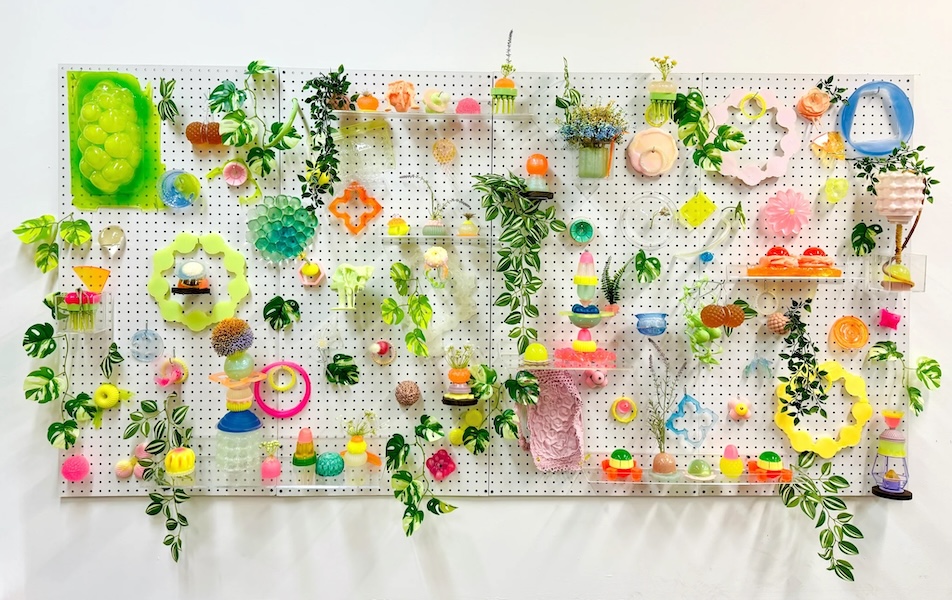Ceramics have become a bit of a thing in the contemporary art world, showing up in rising art-star listicles or highlighted trends in art or design fair press releases. We’re not saying that’s a bad thing, and neither would artist Adam Silverman, but the L.A.-based self-described potter (slowly becoming more comfortable with the “a” word) is the real deal.
Although Silverman started out studying architecture, he took pottery classes, being enough of a ceramics hobbyist that he always had his own wheel and small kiln. But after 9/11 he decided to fully go for it, setting up a studio in Los Angeles. His forms have moved from symmetrical spheres and eggs to larger, wonkier, punched-out forms covered with multiple layers of glaze that can look crusty or corroded, while surprisingly pretty and appealing.
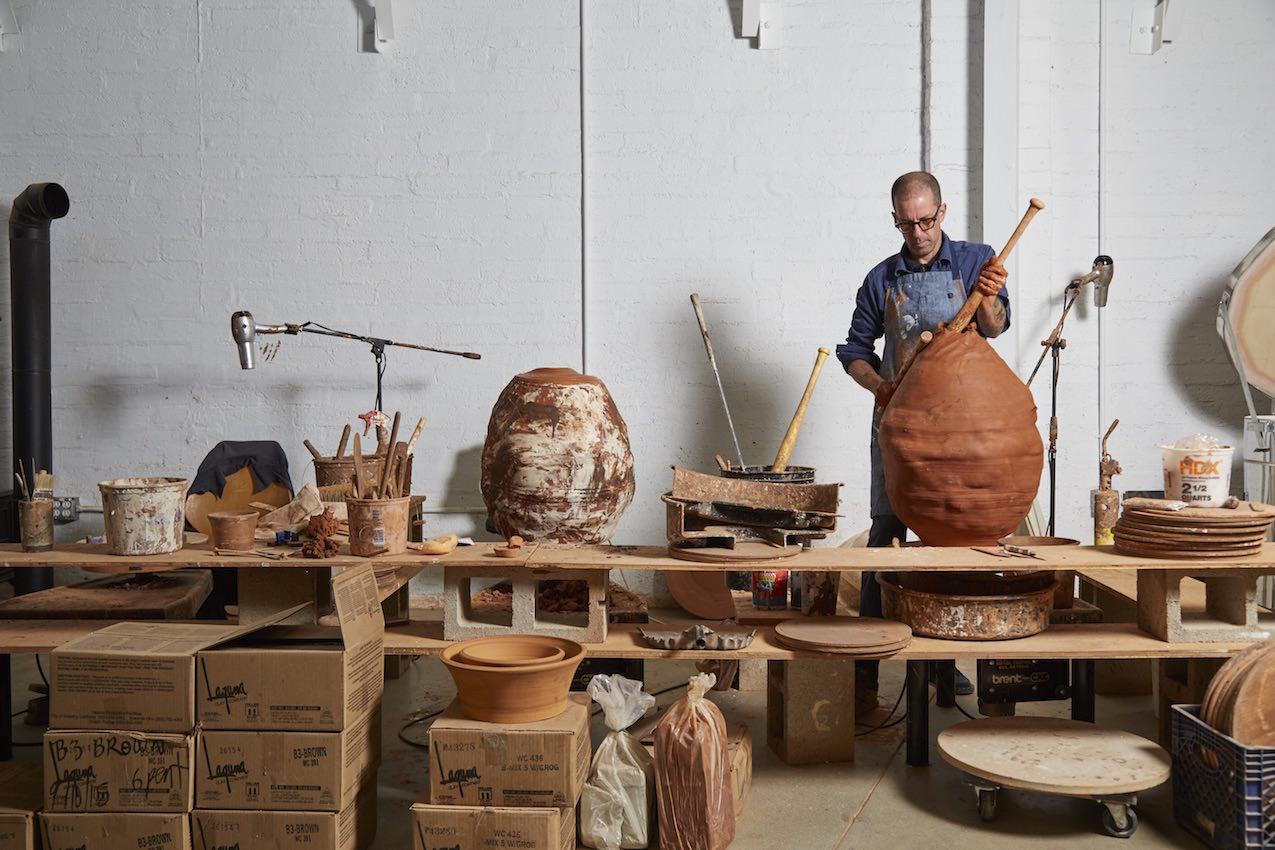
Portrait by Manfredi Gioacchini
This spring he has shows at Cherry and Martin in Los Angeles (“Body Language,”which closed May 14) and Friedman Benda (“Ground Control,” on view now through June 11). We spoke with the artist at the end of 2015 and heard about how his newer, larger, brighter studio has helped him let loose and move away from the perfectionist Japanese or Scandinavian design aesthetic and learned why pottery is definitely the gambler’s art.
WHITEWALL: What are you working on right now for your upcoming shows at Cherry and Martin and then Friedman Benda this spring?
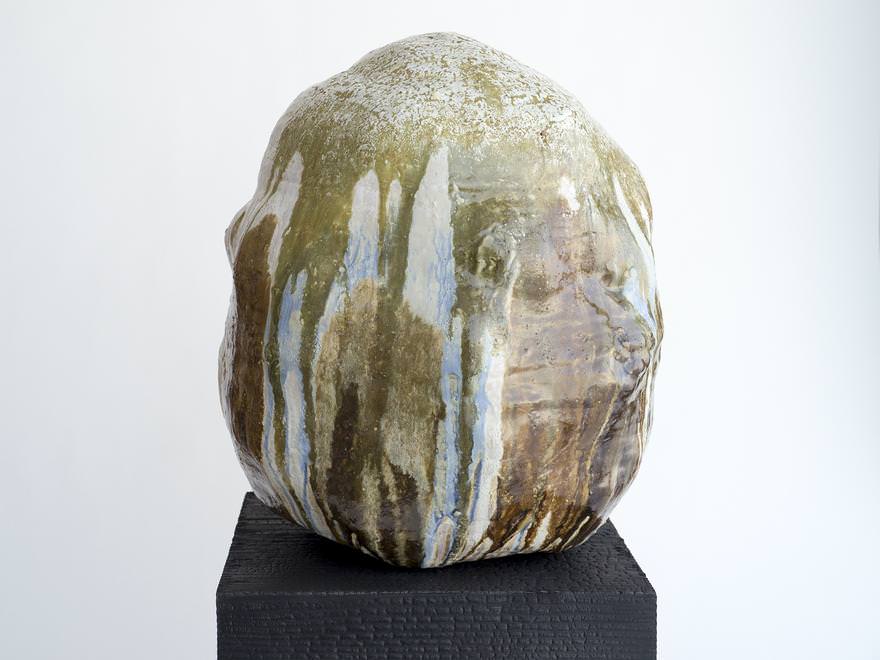
Untitled, 2016
from “Ground Control” exhibition view at Friedman Benda Project Space
May 5-June 11
Courtesy of Friedman Benda
ADAM SILVERMAN: Every time I do a show I think, “This has to be the best show I’ve ever done in my life.” It really doesn’t have to be, but it’s like, if you’re a musician and you make an album, you probably think, “This has to be the greatest album I’ve ever done.”
WW: Okay, so tell us about these shows, the greatest yet?
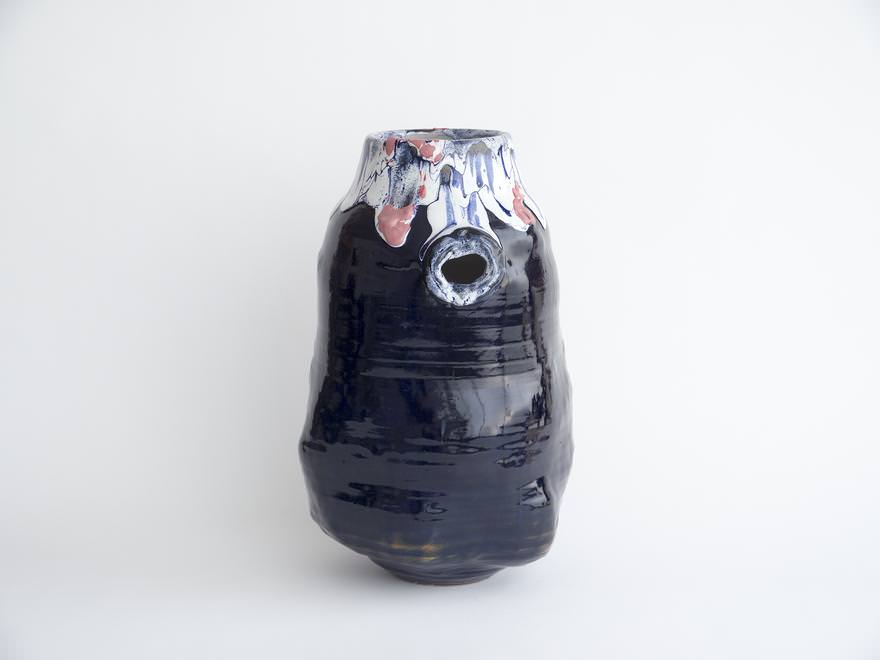
Untitled, 2016
from “Ground Control” exhibition view at Friedman Benda Project Space
May 5-June 11
Courtesy of Friedman Benda
AS: Well, the scale of things is definitely increasing. I’ve been in a new studio for a year and a bit now, and it’s very big and spacious and airy and full of light—fantastic. And in a really literal way, everything that I’m making is getting bigger and looser and freer—the result of having all of this space and sunlight. The work [in the show] will be the largest ones I’ve done. And there are pieces that are made of more than one piece: duets. A lot of times I think of these pieces as still-lifes, or dancers, people moving together and then being frozen in time, like a photograph of dance. Then they really become about the singular objects, the group of objects, and the spaces in between. I look at still-life paintings, like Morandi. You see the individual objects, and you see them lumped together as one large object, and, there’s space between them, around them; there’s shadows and lights. That is what I think about when I make those pieces.
I think the idea of photography of dance as a very heavy-handed parallel to making things on a potter’s wheel, where you choose to stop the motion and freeze it.
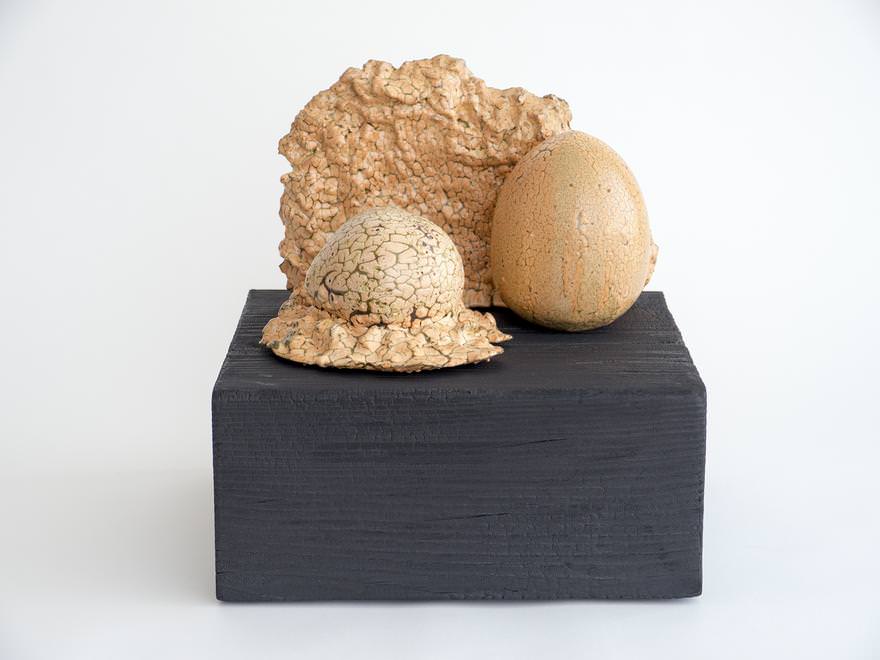
Untitled, 2016
from “Ground Control” exhibition view at Friedman Benda Project Space
May 5-June 11
Courtesy of Friedman Benda
WW: And even mentioning dance, that’s interesting because there is so much physicality in the work that you do, in the process of making ceramic work.
AS: In the way I make stuff, it is a form of a duet with the object, and then at some point I step away and make a decision to try to freeze it there. And that’s just the form. Then you start working on the surface with the glazing, and that becomes another conversation, or duet. I fire my pieces many times, and do many layers of glazing, and grinding, and glazing again, and it’s a similar thing where you have to make a decision to stop. Often I push it too far, and then it cracks in the kiln or it just can’t take another firing. That’s interesting, or entertaining, or depressing. [Laughs]
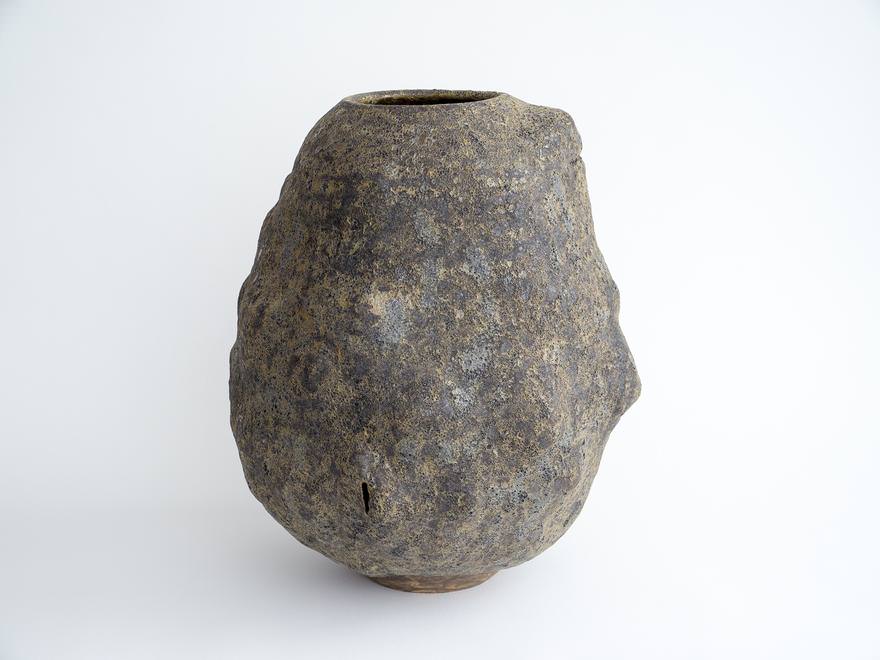
Untitled, 2016
from “Ground Control” exhibition view at Friedman Benda Project Space
May 5-June 11
Courtesy of Friedman Benda
WW: We can imagine that would be so frustrating, going along so far in the process and then having a piece crack in the kiln.
AS: It can be. This is definitely the gambler’s art. I have a lot of control, and I relinquish a lot of control, which I like.
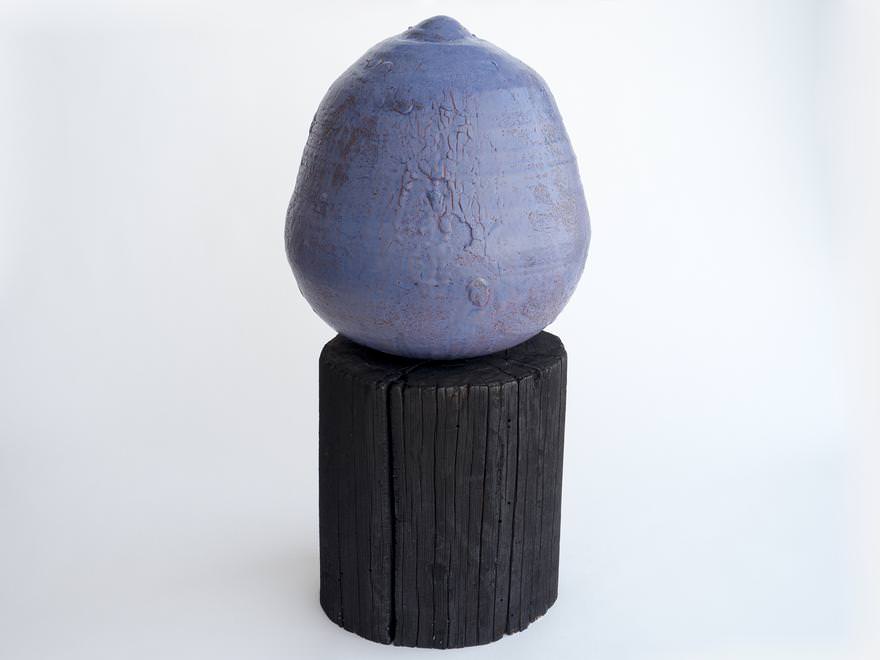
Untitled, 2016
from “Ground Control” exhibition view at Friedman Benda Project Space
May 5-June 11
Courtesy of Friedman Benda
WW: And with the glazes, too, you don’t always know exactly what’s going to happen every time, right?
AS: I don’t at all, because I’m not super-scientific about it. I mix the glazes pretty crudely, and then I do a lot of layering. So even if I know what two glazes will do together, once I add a third or a fourth or a fifth, then I start to get into the unknown. I don’t keep notes, so I can’t go back and say, “Ugh, that’s amazing, how did I get there?” I mean, I have the general idea, I know the foundation of what got there, but there’s a lot of luck and other stuff involved.
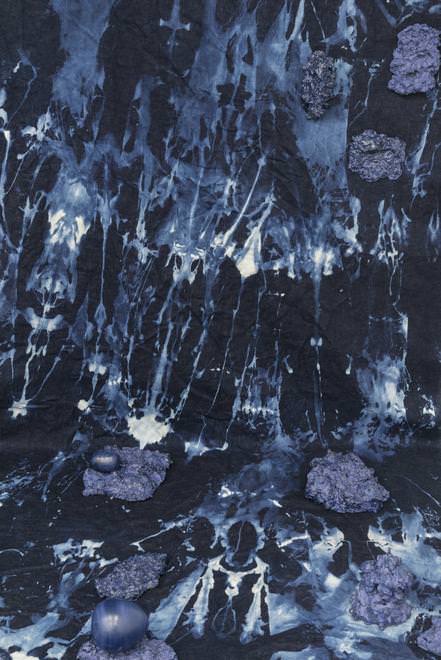
Ground Control exhibition view at Friedman Benda Project Space
May 5-June 11
Courtesy of Friedman Benda
WW: In earlier works, you were experimenting a lot with just the exterior of the form, while keeping the core form of the piece really pure—sphere or egg shapes. But now, it seems like with the newer work, you’re playing with all aspects, punching out the original form from the inside . . .
AS: I am. I’m definitely pushing the forms more than I used to. They are all still originated on the wheel, which means they go in a circle and have various forces involved. But now what I’m doing is really pushing the forms from the inside out. The thing that I think saves them from becoming just completely abstract and out of control is that there’s still on the bottom, where it meets the wheel (and sometimes on the top) a clear circle, or some clear geometry that your eye can still take as a reference. That, I think, adjusts your brain in a way that can make sense of the thing, even when it’s all wonky and crazy.
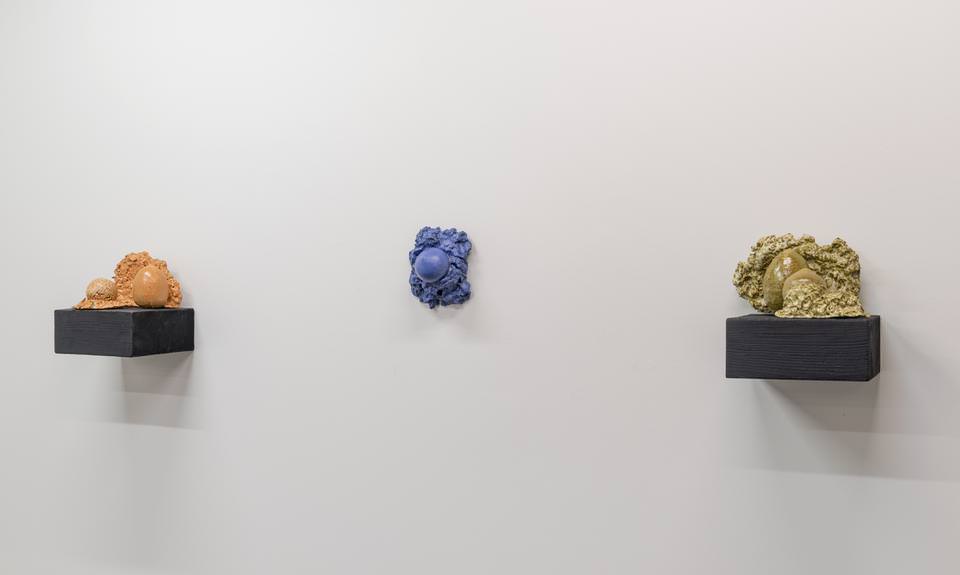
Ground Control exhibition view at Friedman Benda Project Space
May 5-June 11
Courtesy of Friedman Benda
I have been, over the last however long it’s been—ten, fifteen, twenty years—loosening up, which I think is a good thing. I don’t know if you’ve ever done ceramics, but you start in junior high, or high school, and it’s hard. You wind up making a bunch of crappy ten-ton ashtrays. And then you’re just striving like nature tells you to strive, for some sort of elegant, divine form. But you know, you can make crap, and then you sort of try to pretend you’re a primitive artist.
WW: Crap on purpose! Just kidding . . .
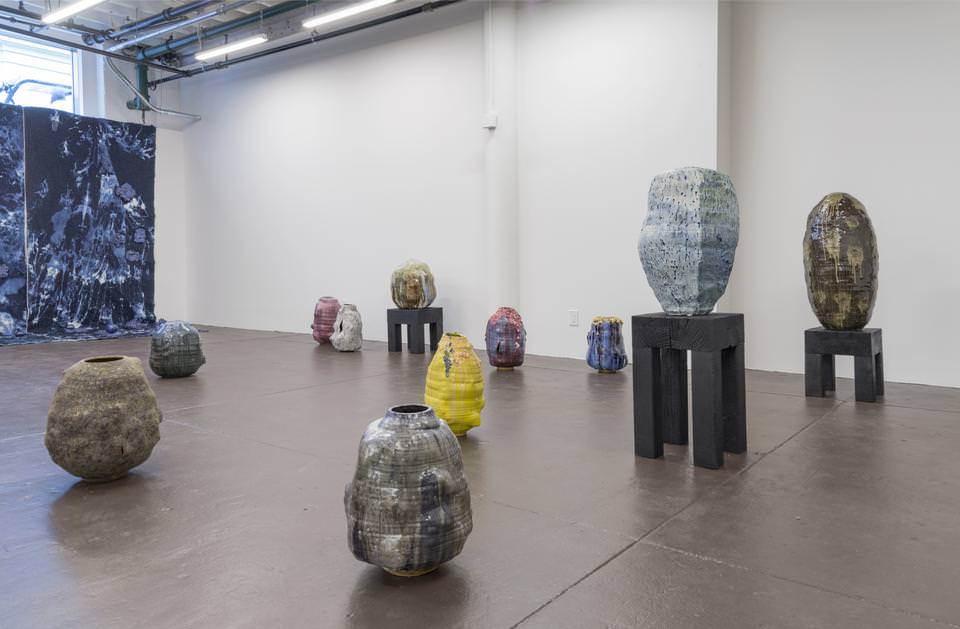
Ground Control exhibition view at Friedman Benda Project Space
May 5-June 11
Courtesy of Friedman Benda
AS: You have to be really, really good, and really tight to be able to go back to the looser thing in a way that is meaningful, and it’s not just garbage.
I think about people like Picasso, who was the consummate draftsman, and then when he went and became an abstract painter, it was much more significant than someone who just went straight to abstraction and couldn’t draw. Or Peter Voulkos, who was an incredibly good potter, winning all sorts of cup and plate awards, and then became, just, this lunatic caveman, making really amazing, elegant, deconstructive, terrifying stuff. That stuff really used to scare me. I feel like I guess as I get more confident, I can relate to it much more, and appreciate it much more, and move away from the kind of Scandinavian, Japanese, refined aesthetic that was so important to me ten years ago.
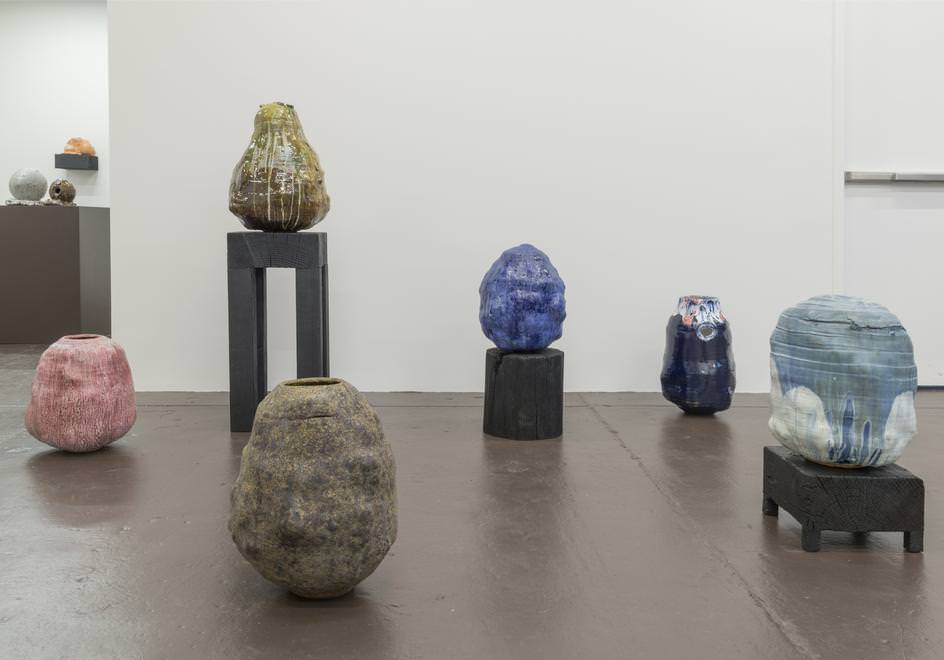
Ground Control exhibition view at Friedman Benda Project Space
May 5-June 11
Courtesy of Friedman Benda
WW: What pushed you in that direction, do you think?
AS: I remember many times over the years, thinking, “I need to loosen up. You’ve got to loosen up. This is crazy.” And then I’d try to just “loosen up,” spend a day making loose things, and it just felt so contrived and not successful, and I would look at the pieces and think, “These don’t feel like me. I feel like I’m acting.” But now that’s not the case. Now this is what feels right, and since I moved into this new studio it’s been moving much quicker than it had been, but it doesn’t feel at all contrived. It feels good. It feels like this is what I should be making now.
WW: Bringing it back a bit, before you set up a studio, you had careers in architecture and fashion, and post-2001, decided to become a potter full time. Did that decision coincide with you moving to L.A. as well?
AS: No. I was in L.A. right after college, in ’88. I was a hobby potter then, had done a lot of ceramics in school. But I was an architecture major, and of course had every intention of being an architect and no intention of being a potter. I moved to the East Coast in 2001, with my then wife and kids, and September 11th happened. So I returned to L.A., essentially a year later.
WW: So you set up a studio right after you moved back?
AS: Yeah, up until then I’d always had a studio in the garage, or the basement, or depending on wherever I lived, and it was just one small kiln and one wheel. And when I came back, the idea was that I was going do it for real. I gave myself a year to try, and I had money saved, and I said, “All right, I’ll do it for a year, and if it works and it seems like I can make a living, then I’ll keep going, and if not, then I’ll figure out the next job.” So I got a proper studio, and got a business license and a business phone, and started making stuff. It took a while. I worked for at least six months before I tried to sell stuff, just to do it, to make work that I thought was good enough to try to sell, and to think about the business side of it.
WW: Did you have a community or know of other potters in L.A.?
AS: No, there really wasn’t. Or if there was, I didn’t know them. I had no friends who were potters, at all. But now, you can’t throw a rock in L.A. without hitting a potter.
Which is cool. I mean, every single little boutique has one or two people that they work with. So it’s nice. I like that so many people are doing it. I think it is sort of the post–September 11th, post–economic crash of 2008 thing. A lot of people were doing it as a hobby and then decided to take the plunge.
WW: Wanting to make something with their hands, right. It’s interesting that you keep calling yourself a potter rather than a craftsman, artisan, designer, or artist.
AS: I think that’s my own sort of half-snarky self-defense technique. In my mind, I’m making art, I’m making ceramics under the art umbrella. I practice like an artist. My studio is an art studio. I am, for all intents and purposes, an artist. More than a designer.
WW: Why is that?
AS: One big difference is that designers, in general, have a client, and are dealing with some sort of problem that they’re solving, and in my case that’s very rarely the case. I’ll do occasional commissions, but for the most part I come in and do whatever I want. I don’t necessarily know where the day’s going to take me. So, I’ve been more willing to use the “a” word lately.
But there is also this nice tradition where there have been ten or twenty clay people over the last fifty years who get to be in the art world for whatever reason. There’s this tradition of art galleries having a kind of token clay person. And that’s sort of my goal, to be the token clay person.
This article is published in Whitewall‘s spring Art Issue, out now.






